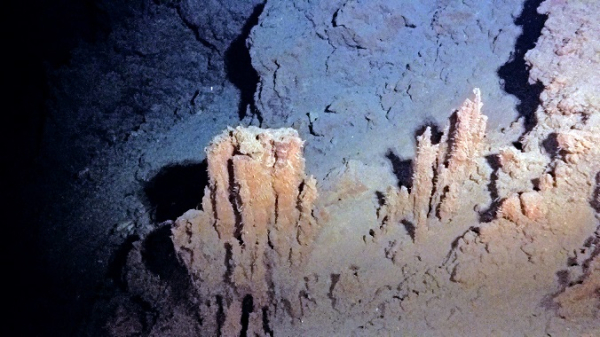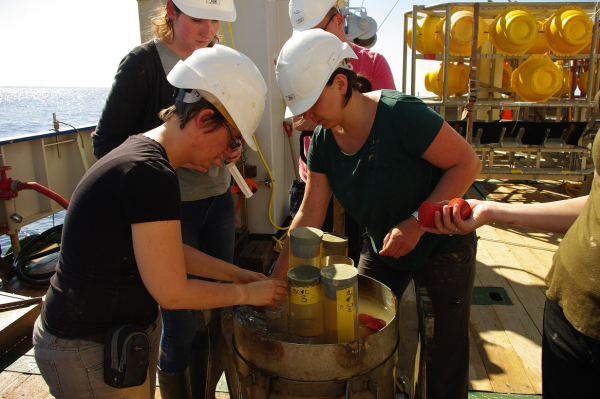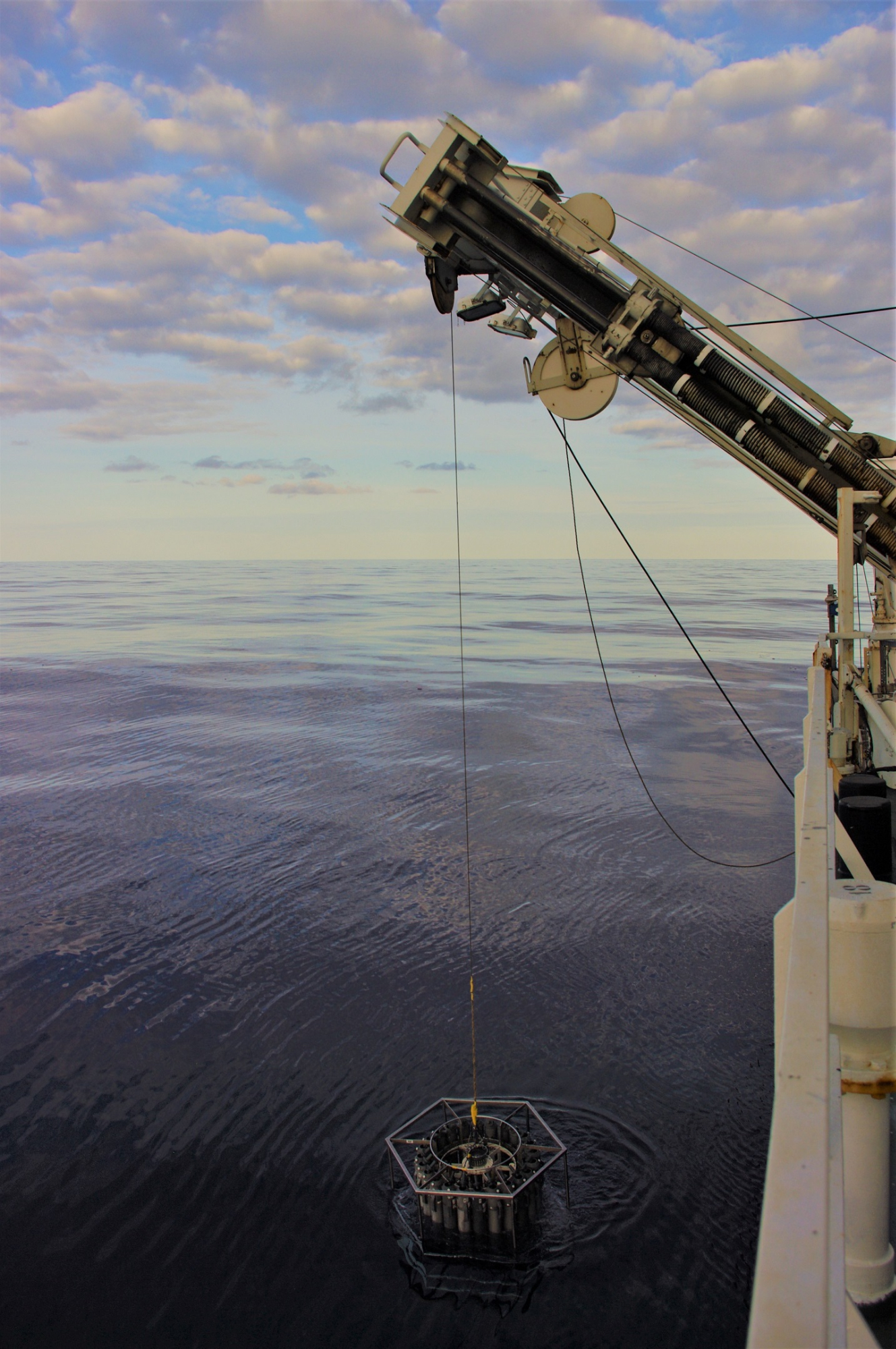Hydrothermal vents occur worldwide and are patchy distributed along mid-ocean ridges. Single vent fields are typically separated by ~10 km to 100 km distance. During this research expedition we study the Rainbow vent field, ~550 km south from the Azorean Islands in the Atlantic. At about 2300 meters depth, so called “black smokers” expel up to 350 degree Celsius hot and mineral rich water into our oceans. The hydrothermal fluids contain also sulphide which is providing energy for microbes that thrive in high density at deep-sea vents. The microbes serve as food for highly specialized vent animals. However, our knowledge on species occurrence at active vents, but especially in vent surroundings is extremely spare. Vents represent fragile ecosystems that are under threat in our changing oceans. The rising global need for minerals will introduce stressors to vent environments caused by future mineral mining.
During our research expedition we explore biodiversity at and around the Rainbow vent field. We use a towed video system to map the change in substrate type and animal communities from the active “black smokers”, towards inactive “black smokers”, and towards deep-sea sediments. We use box-cores to sample the sediments on the bottom of the sea floor where smaller animals and bacteria live in. We also use these sediments to analyse mineral and nutrient content of sediments when back in the lab on land.


We use a CTD to “hunt” for the black smoker plume from the vent. With the CTD we can measure the conductivity, temperature, depth, and also the turbidity of the seawater. This way, we can determine how far and in which direction the black smoke from the vent is travelling in the water column. From the depths where we had detected the plume, we collect seawater. In the seawater we look for the larvae of vent animals using genetic methods. We use this method to study the dispersal of vent animals.
One year ago, during the NICO12 expedition, we had deployed a “Lander” at 2300 meter depth in 3 km distance to the Rainbow vent field. On the “Lander” we had mounted dead mussels, which naturally occur at active vents. We have in the meantime recovered the “Lander” from the bottom of the seafloor during this expedition and they are now back on deck of the research vessel Pelagia. We have observed that within this one year the flesh of the dead mussels was almost completely rotten away and was smelling like rotten eggs, an indication for sulphide production. We found animals that had settled among the empty mussels shells. Back in the lab on land we will identify the species. We want to know if near-by scavengers are eating the mussels, or if the sulphide-adapted vent fauna can use the rotten mussels as food and as a fuel station to migrate between the vent fields. Our results will help us to better understand in what way the specialized hydrothermal vent fauna can disperse between the far spaced patchy vent fields.
